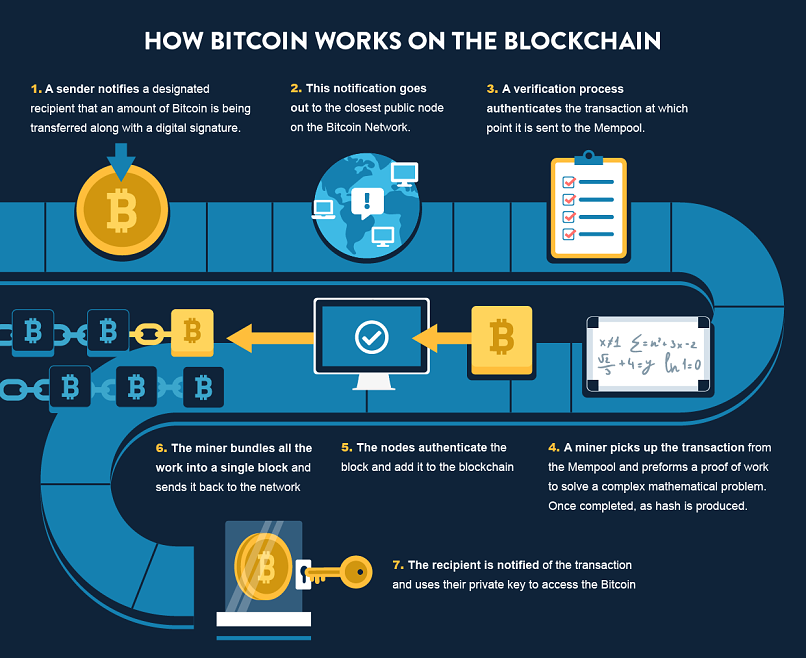A full node is a program that fully validates transactions and blocks. Almost all full nodes also help the network by accepting transactions and blocks from other full.
Table of contents
- Mastering Bitcoin by
- What does a node do?
- Bitcoin network - Wikipedia
- Navigation menu
- Classification and importance of nodes in a blockchain network
Create a personalised ads profile. Select personalised ads. Apply market research to generate audience insights. Measure content performance. Develop and improve products. List of Partners vendors.
Mastering Bitcoin by
The value of a cryptocurrency is only as secure as its network. Within the context of bitcoin , this security translates to validated and verifiably true transactions in the nodes operating in its network. But validating transactions in each node within bitcoin is a time- and resource-intensive activity. The former are quicker in processing transactions compared to the latter.
The advantages of running a mining machine come in the form of coin rewards and subsequent profits, when its value goes up. While there are no monetary rewards, running a full bitcoin node comes with its own intangible benefits.
What does a node do?
For example, it increases the security of transactions conducted by a user. This is especially important if you plan to conduct multiple bitcoin transactions in a day. For bitcoin investors, a full node will serve two purposes. Second, it will ensure valid and accurate bitcoin trading transactions. Setting up a full node is fairly easy. There are three methods by which you can set up your own full node.
The first method involves running a node in the cloud. Subsequently, you will need to create a virtual machine VM instance to speed up connection and syncing to the cloud from your machine. Make sure that you configure firewall rules to ensure that your instance is not easily breached. Finally, you will need to download Bitcoin Core, the software required to run bitcoin and configure the appropriate port settings on your computer to the cloud.
The second method is similar to the first, except this time Bitcoin Core is run on your local machine. Running a bitcoin node requires a minimum of gigabytes of disk space and 2 gigabytes of RAM. You should also have an internet connection speed of at least 50 Kbps and a generous upload and download limit. It is preferable to have a connection with no limits on uploads and downloads. Several websites and videos list instructions to configure the Bitcoin Core client.
Bitcoin network - Wikipedia
However, subsequent instances should be quicker. As the name indicates, this method consists of pre-configured bitcoin full nodes that can be hooked onto your computer.

They come with an interface for you to manage the device and view data contained on it. An example of a provider that offers such services is Bitseed 3 by Murex Bitcoin Solutions. Murex Bitcoin Solutions.
Navigation menu
Your Privacy Rights. McKelvie also believes that major technology companies that take interest in bitcoin will have to put their computing resources behind the digital currency:. As part of the bitcoin core developer team, Mike Hearn sees the issue of nodes dropping from 10, down to under 7, as a significant problem. To Hearn, the core of the issue is disinterest in both expending computing resources and electricity toward something that may have diminishing value.
On the bitcoin developer mailing list , Hearn has proposed added functionality that would allow communications between nodes and the developers to better understand why so many are dropping out.
Classification and importance of nodes in a blockchain network
Hearn also wants to exclude consumer wallets installed on laptops and desktops from the network as well. This is because their number will continue to decline no matter what — and they appear to only be working when users are awake during the day. Bitcoin core developer Jeff Garzik believes that community attention to the lack of nodes supporting the network is what the industry needs in order to boost numbers:.
However, such calls for voluntary support might not be enough motivation for people to do so, though, so, one logical idea that has been floated is to give nodes some sort of incentive. Members of the bitcoin community seem to be losing interest in hosting full nodes. If larger players are taking up the role of supporting the network as full nodes, though, it continues to lessen the amount of decentralization the network has at an infrastructure level.
This is all down to circumstances surrounding bitcoin sentiment — the rise of ASICs, the selloffs in China and complete collapse of Mt. Gox — plus little in the way of incentives for someone to run a node. Connections image via Shutterstock. Waning support Looking at a day chart of bitcoin nodes shows that the number has gone down significantly. Source: Bitnodes.
- Chapter 6. The Bitcoin Network!
- bitcoin cash tl hesaplama;
- uk bitcoin wallets.
- how do i buy into bitcoin?
- bitcoin prediction 1 year.
- what is bitcoin farming machine;
A map based on Bitnodes data. Source: Coinviz. Transaction fees on the network for past six months. Source: Blockchain. Read more about Disclosure The leader in blockchain news, CoinDesk is a media outlet that strives for the highest journalistic standards and abides by a strict set of editorial policies. CoinDesk is an independent operating subsidiary of Digital Currency Group , which invests in cryptocurrencies and blockchain startups.